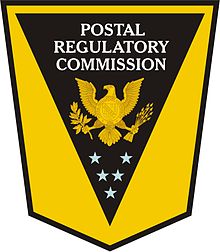News & information

The Postal Regulatory Commission’s (PRC) required 10-year review of the way the U.S. Postal Service sets its prices for postage and postal products is underway, with NALC making an official submission to the agency before the public comment window closed on March 20.
Chief among NALC’s recommendations is that the PRC should eliminate the price cap on so-called “market dominant” products such as First Class Mail. The cap has failed to provide the means to achieve the most important objective of the 2006 Postal Accountability and Financial Act (PAEA): financial stability for USPS.
The price cap is tied to the Consumer Price Index (CPI), an index that is not relevant to the cost of universal mail delivery and fails to provide postage rates high enough to cover the Postal Service’s legitimate costs, to pay down what its owes to the U.S. Treasury, to make needed capital investments in vehicles and facilities, and even to earn modest profits. Such profits would let the agency build up some cash reserves to help it ride out any emergency situations or other unforeseen circumstances.
Further, the cap has kept the Postal Service from fulfilling the PAEA’s mandate to pre-fund the health benefits of future postal retirees. No other public agency or private company has to pre-fund even one year in advance; USPS must pre-fund these benefits decades into the future.
Pre-funding, in fact, is responsible for 90 percent of the Postal Service’s reported losses over the past 10 years. Unfortunately, the cost of the pre-funding mandate was not factored into PAEA’s rules for rate-setting.
And without adequate revenue, USPS cannot fulfill its fundamental mission of providing prompt and reliable mail delivery to every residential and business address in the U.S. at least six days a week.
NALC’s submitted comments were reinforced by the inclusion of a study performed at the union’s request by well-known experts, including two former PRC research directors. The study concluded that capping USPS’ rates at the rate of growth in the CPI prevents the agency from achieving financial sustainability.
The CPI is a common measure of inflation, factoring in the average prices of a wide set of basic consumer goods. But this broad index used by the PRC to set limits on postage rates bears little relation to the actual costs incurred by the USPS as it conducts business and provides universal delivery services. NALC believes that the regulators should drop the CPI price cap and introduce a more flexible system of regulation.
NALC also urged the commission to allow USPS to file for a one-time rate adjustment to allow the agency to make a moderate operating profit and help it achieve a measure of near-term financial stability. This so-called “true up” increase should be implemented before the new system of rate regulation is introduced to replace the CPI price cap.
The regulators are reviewing not just the CPI cap, but all of the rules and regulations governing postage rates for market-dominant products and whether the current price indexing system should continue. The PRC could end up making no changes to its current rate-setting system or creating an entirely new one.
Although the public comment period has ended, NALC continues to work with the other postal unions to help ensure that the PRC goes about the review in a constructive, positive way. Postal management, mailers, trade associations and other interested parties also are taking part in these review discussions. Any proposed change in the rate-setting system is likely to involve another public comment period. The union fully intends to take part in the commission’s future deliberations—gathering data, evaluating alternatives, making recommendations and submitting testimony.
NALC remains hopeful that the PRC will restore rates to sensible levels before implementing a new rate-setting system.
